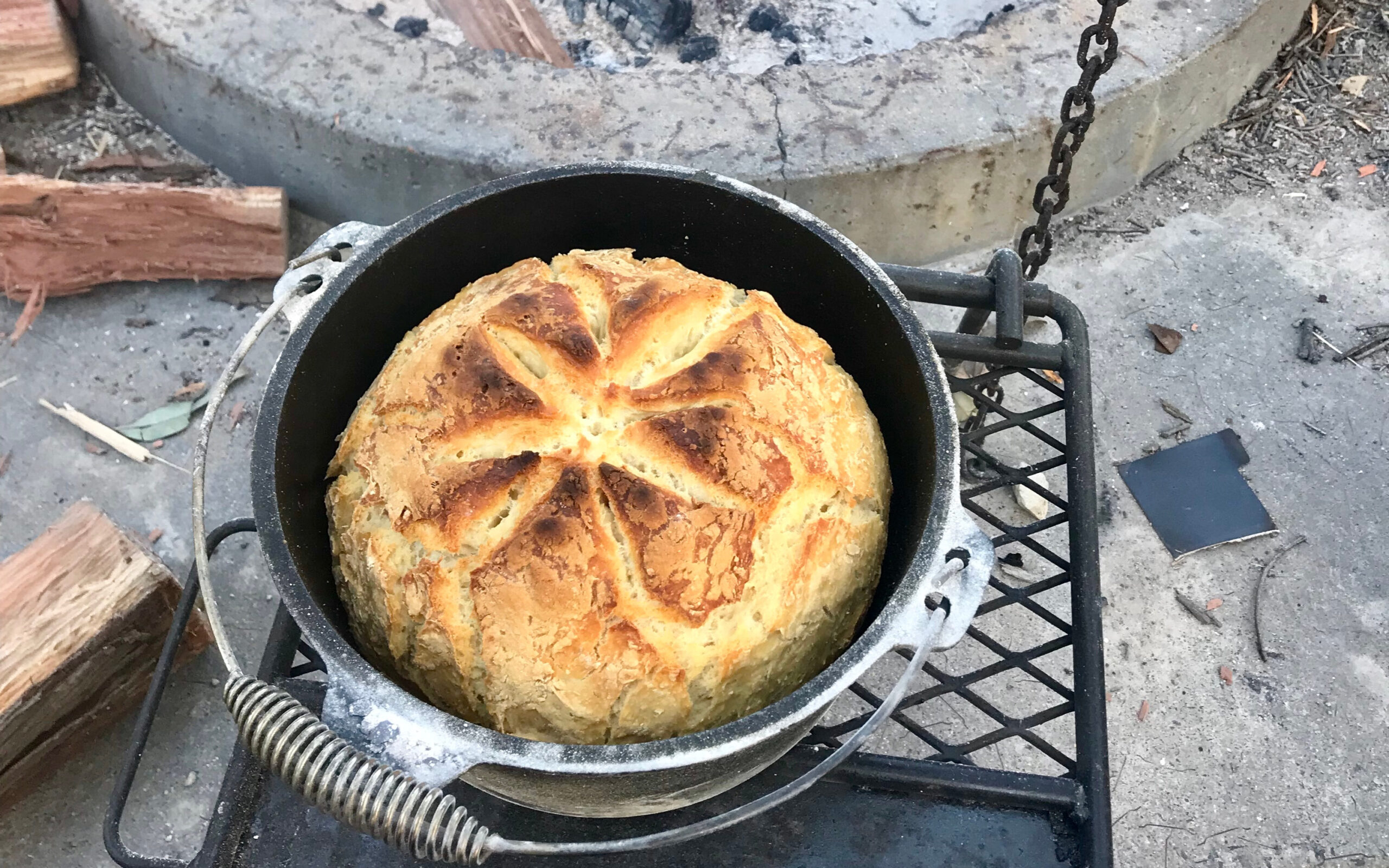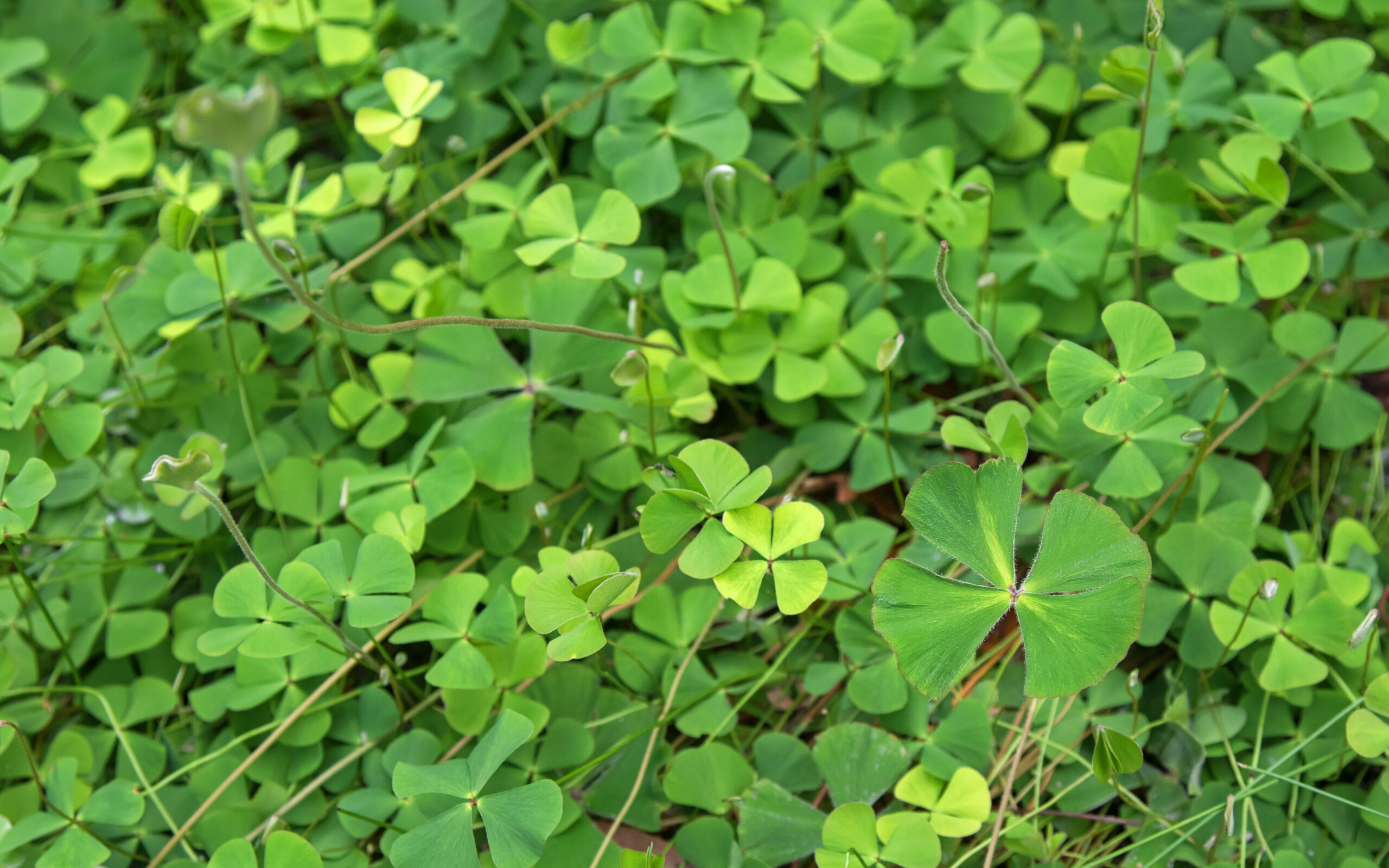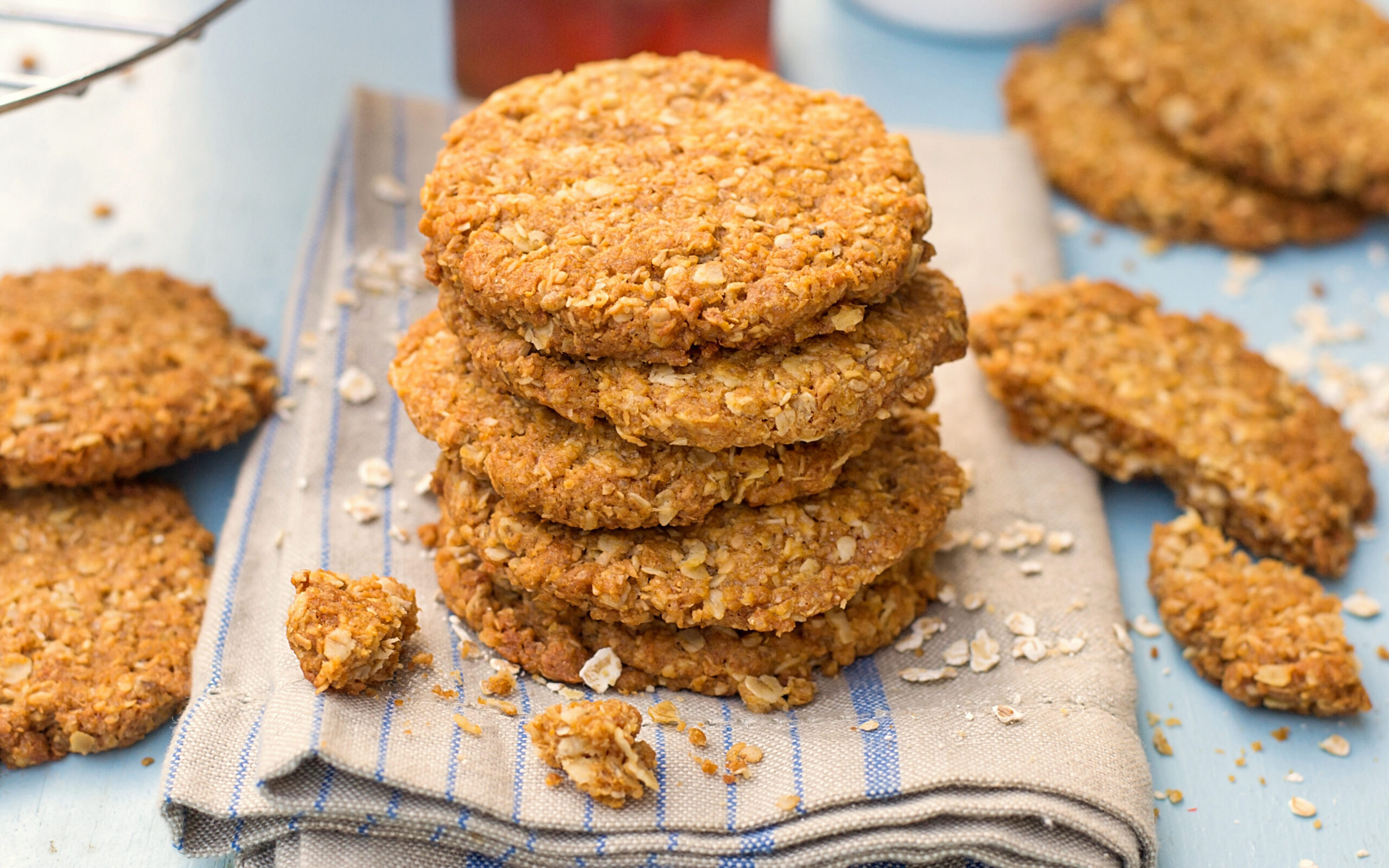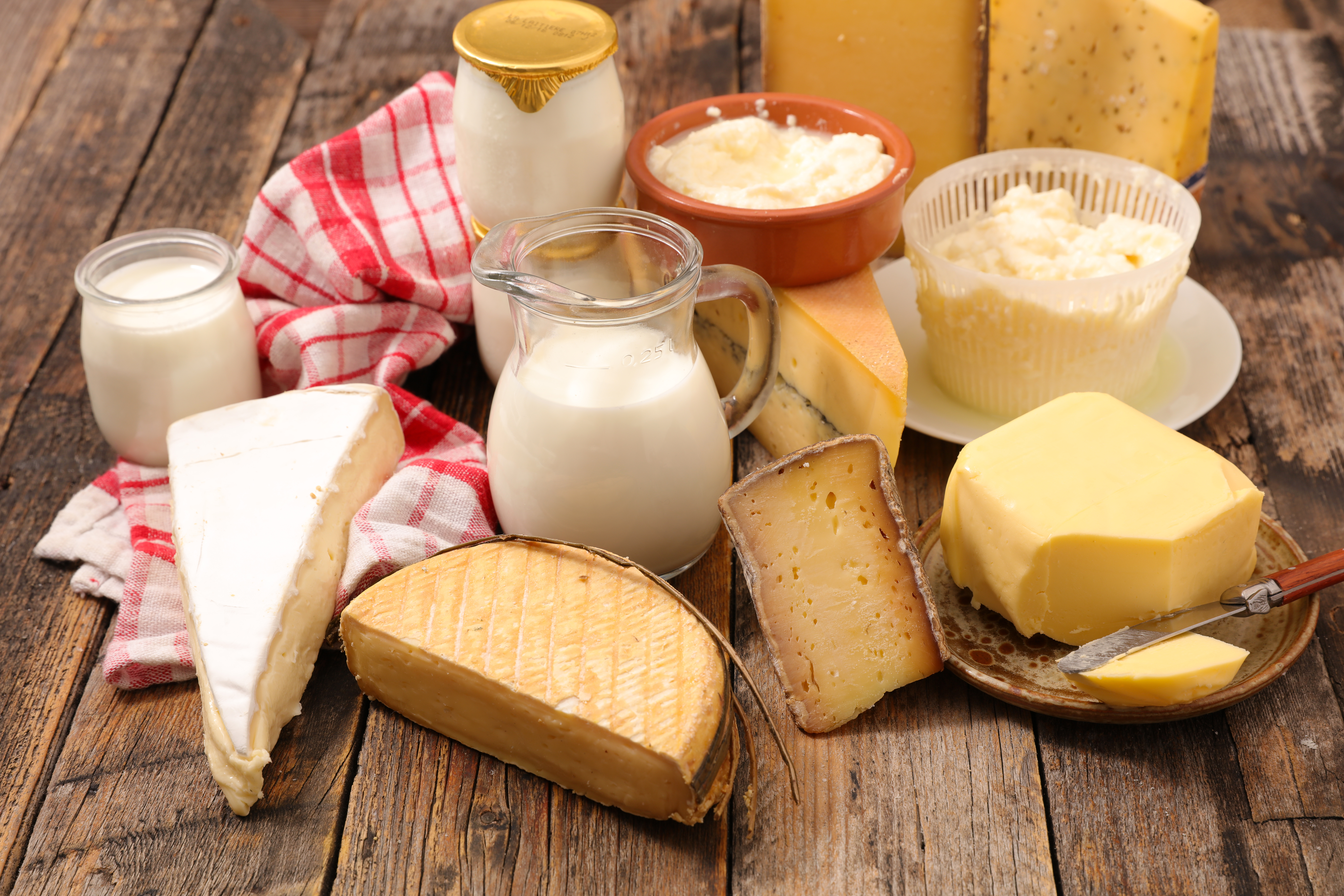Australia’s cuisine culture: a history of our food

In Adelaide in the 1950s, my grandmother was our family cook, turning out such standards as shepherd’s pie, lamb chops, and apple pie and custard. She cooked tripe in white sauce as a treat. I liked it.
An after-school favourite was a South Australian speciality, jubilee cake. This was a teacake with dried fruit, which was iced and sprinkled with coconut. Sliced and buttered it was the best cake in the world.
Her cooking now seems plain, but unlike many people in the world at that time, she had access to quality ingredients, many of which were gathered from our Adelaide backyard. Back then the choice in milk was simply the number of pints ladled by the milkman into our billy early each morning.
Bread was delivered by cart, too, and the greengrocer would fill an order from a large green van. Men used special tongs to carry huge, dripping blocks of ice down our gravel drive to the ice chest in the laundry.
My grandfather’s crucial contribution, other than ensuring that I sat with a straight back, was telling stories around the kitchen table.
Australian food today
Today, Australian meals are more diverse than ever, influenced by aisles of inexpensive ingredients, a platter of cultures and a menu of resurgent interest in food.
Unlike other societies with a dominant agrarian history, we have inherited no cuisine in the traditional sense. Australia’s food history has instead been dynamic, urban, industrial, science-based and capitalist-driven.
In terms of the most popular Australian evening meals, simply cooked ‘meat and three veg’ still wins out in industry surveys, but an Asian dish – a stir-fry or a chicken curry – is always included near the top, and annual sushi sales (116 million serves) are starting to rival the traditional meat pie (177 million).
In my youth, we each ate about 50kg of beef a year. Now we eat more chicken (38kg, compared with 33kg of beef). Lamb and mutton consumption has fallen to one-fifth of earlier levels (now 14kg), but – with 25kg of pork, ham and bacon, and other meats – we still eat three times more meat than the world average.

Health experts tell us only one in 10 Australian adults consumes sufficient vegetables.
True, we eat an average of 62kg of potatoes a year, but mainly as chips. During 2011, children aged between 14 and 17 together ate 44.1 million serves of hot chips. That was on top of 30.2 million hamburgers.
Of the more than $130 billion we spend on food each year, a quarter is spent in restaurants, cafes and takeaway shops.
Coffee consumption alone is enough to give anyone the shakes, doubling since 2004 to almost 3 billion cups savoured in cafes and restaurants each year. The world is fast taking to Australia’s greatest gastronomic invention (perfected in New Zealand), the flat white.
We buy takeaway food an average of 4.1 times a month, and eat out 3.5 times a month, but four out of five Australian evening meals are still home-cooked. In a 2009 How Australia Cooks Report commissioned for Westinghouse, steak or chops with vegetables topped the list of the most popular evening meals, followed by a roast or baked dinner.
Spaghetti bolognaise or other pasta dishes came third, and a stir-fry fourth.
The diversity of ‘Australian’ cuisine
Such is the proliferation of foods and techniques that it may seem nonsensical to search for a distinctively ‘Australian’ cuisine, especially in a country where the climate ranges from cool maritime to tropical. However, it’s true that what we eat today has been distinctly shaped by what we prepared earlier.
“No other country on earth offers more of everything needed to make a good meal, or offers it more cheaply, than Australia; but there is no other country either where the cuisine is more elementary, not to say abominable,” said Edmond Marin la Meslée, founder of the Geographical Society of Australasia, in his 1883 book, L’Australie Nouvelle.
His judgement was not unusual. Many people over two centuries have deplored our cuisine, and even the abundance of food was in doubt at the beginning of colonisation.
Early settlers dining
Aboriginal inhabitants were mainly hunter-gatherers, employing an array of light-weight techniques depending on habitat, rather than farming crops and domesticating animals in the way that European explorers were used to. English seafarer William Dampier observed in 1697, “The earth affords them [Aboriginals] no food at all.
“There is neither herb, root, pulse nor any sort of grain for them to eat that we saw.” Blind to what was in front of them, the colonists adopted virtually no indigenous foods. Kangaroo meat was rarely touched.

First fleet rations included typical English foods such as bread, oatmeal and cheese, as well as the seafarers’ salted meat, dried peas and vinegar (which was thought to protect against scurvy).
But the settlement was quickly reduced to even simpler rations – salt meat, flour, sugar, tea and excessive spirits. These were readily transported, often coming from China, India and slave-worked plantations on the other side of the globe.
The first settlers brought inadequate seeds, stock, implements and expertise. Some governors encouraged smallholders, and the so-called dungaree settlers – emancipated convicts – supplied Sydney’s early markets.
By the 1820s, Australia’s seemingly endless grazing lands were settled by ‘squatters’, relatively privileged adventurers who purchased expensive stock, seized tracts of land and paid nomadic male labourers in rations.
Weekly pay was often 4.5kg of meat, 4.5kg of flour, 1kg sugar and 100g of tea, so the repetitive campfire meal was damper, billy tea and a slab of meat. Some boasted about “meat three times a day”, although the protein quickly went off and was notoriously overcooked.
Until 1864, the only significant publication of recipes was two pages in an emigrants’ guide in 1853, credited to social reformer Caroline Chisholm.
She divided the week’s rations into seven daily parts and found seven ways to combine meat and flour.

Local produce increases
For its century, colonial Australia remained highly dependent on imports, other than for meat, but from the 1880s, the railways opened up the hinterland to agriculture: wheat, milk, sugar and irrigated fruit.
Many Chinese immigrants – initially attracted by the gold rush – supplied cities and towns from nearby gardens. James Harrison of Geelong invented mechanical refrigeration in 1851, but it would be a century before household fridges were common. In the suburbs, bread and milk were delivered daily to every house by horse and cart, and the butcher, grocer, greengrocer and ice-carters would soon make regular visits.
Milling, bottling and canning improved shelf life and Australian cooks were encouraged to purchase processed, branded foods. From the 1870s, factories manufactured Rosella tomato sauce, Arnott’s biscuits, IXL jams and MacRobertson’s and Small’s chocolates. Roller mills produced white flour, which went into cakes and puddings.
Foster’s beer was brewed by Americans in 1888, using refrigeration, pasteurisation, bottom fermentation and bottling, turning beer from an inappropriate disappointment in hot climates into a national beverage.
The creation of national dishes

With an increasingly reliable supply of eggs, butter, flour, sugar and the latest grocery items – from desiccated coconut in the 1890s to cornflakes in the 1930s – cookery books began to proliferate.Essentially rearrangements of Englishwoman Eliza Acton’s Modern Cookery for Private Families from half a century earlier, the books showed standard techniques for dealing with the empire’s ingredients.
Basic ways to treat the local specialty, cheap meat, included shepherd’s pie (mince covered in mashed potato) and Irish stew. The fanciest meal, reserved for midday on Sundays, was a baked dinner of lamb or beef and vegetables.
An early craze for desiccated coconut showed up in lamingtons and other innovations around the year 1900. Other Antipodean classics, such as Anzac biscuits, pumpkin scones and Pavlova, came from this golden age of baking. In the 1930s came treats such as chocolate crackles and Yo Yos, reminiscent of Melting Moments but with custard powder.
I recently surveyed cookery competitions at local agricultural shows to see which of these classics are still popular. Show schedules accept many recipes from the United Kingdom, such as queen cakes, seed cake, Madeira, tennis cake, Swiss roll, and brandy snaps. Lamingtons are found at more than half the shows and Anzac biscuits at more than one show in three.
Jubilee cake remains a specialty of South Australia and Mildura, which is just up the Murray River in Victoria.
By the 1920s, each city had acquired its own cookbook bibles, containing much the same plain recipes and published, typically, by women’s groups connected with schools and churches. The books, and the cooking, didn’t change much until the late 1950s.
Technological contributions to Australian cuisine
After World War II, munitions factories were converted to make family cars and domestic refrigerators. According to figures from Kelvinator, 73 per cent of metropolitan homes had a fridge by 1955. Replacing the old ice chest, ours contained a little freezing compartment to hold fish fingers, packets of peas and ice-cream.
Even more importantly, cars could carry a load from the supermarket, replacing home deliveries by horse-and-cart. I didn’t even go to a supermarket before 1962. The slashing of margins had seemed counterintuitive, but Perth mogul T.E. Wardle pioneered the trend and, by 1959, the turnover of his 15 Tom the Cheap Grocer stores was £1 million (about $29 million today).
In supplanting the personal service of small retailers, and opting for the efficiency of tinned, packet and frozen foods, supermarkets did away with individual care demanded by fresh produce.
Taking ocean voyages to Europe in the 1950s and 1960s, many Australians had begun to discover the joys of French, Italian, Greek and other traditional cooking. Recipe books of all kinds began to be published in great numbers. The number of restaurants increased by 12-14 per cent each year.
Television – which reached Sydney and Melbourne in time for the 1956 Olympics – marketed branded vegetables, fruits, drinks, biscuits, snacks and, eventually, takeaway chains. All relied on the same innovations – television, cars, plastic packaging, and increasingly sophisticated production lines and distribution networks.
The birth of the modern food industry in Australia
Cost-cutting meant cheaper ingredients, artificial flavours and colours, and shortcuts. A good example was continuous-process bread – traditionally, bakers let the dough rise slowly, but now, using additives, flour could go in one end of a production line, and sliced, wrapped loaves would come out the other.
Cost-cutting also forced farmers to “get big or get out”. Australia had 83,000 dairy farms in 1954, but this dropped to 22,000 in 1980, only 9250 in 2005 and about 6500 now.
Jerseys, with superior milk, were still the most popular breed in the 1950s, but the huge, black and white Holstein Friesian breed, which averages 45L a day, albeit of poorer quality, became dominant.
Australians today scull 103L of milk each a year, plus 18L of ice-cream, 13kg of cheese, 7kg of yoghurt and almost 4kg of butter.
In the 1950s and 1960s, our meat production still relied on grazing – and so we ate more beef and lamb. But thanks to increasing factory methods, chicken production costs shrank to about 40 per cent of the other main meats, helping to multiply its consumption tenfold to today’s levels. Likewise, pig-meat consumption has almost trebled.
The Australian diet really began to change in the ’50s when the influx of Italians and Greeks introduced us to foods such as zucchinis, capsicums, eggplants, globe artichokes and the previously maligned garlic.
Food factories in each city were absorbed by larger national firms, and then by multinational corporations. Marketers worked to increase value-added food consumption, especially through so-called convenience foods, in which extra preparation was done before the food reached the domestic kitchen. Characteristic items included dried Chinese meals, frozen pizzas and pre-mixed cakes.
During my lifetime, manufacturers have turned to excessive sugar, salt and fats. They have promoted king and family sizes, invented flavoured drinks and encouraged snacking between meals. During my school years, an overweight child was a curiosity. Now, one in four Australians is classed as obese.

Changing culinary landscapes in Australian food
My local Sydney shopping centre is small but rich in cuisine choice, with pizza prominent and a couple of cafes. There are Indian, Malaysian, Thai and Japanese restaurants. Chinese might be missing, but about two dozen are within an easy walk in the other direction.
Although many do, it’s too simple to credit Australia’s culinary expansion to immigration. For example, Thai restaurants exploded in number in the 1980s, but relatively few Thais arrived during that period. On the other hand, Vietnamese restaurants emerged mainly in suburbs where they settled.
More recently, Chinese students and arrivals have become major diners-out, creating entire shopping districts of Chinese restaurants, with increasing representation of all regions of that country.
When I surveyed restaurant prices in the early 1990s, I found they tended to vary according to the nationality of the cuisine. A restaurant advertising French cooking was likely to be among the most expensive. Italian came next, followed by Japanese, and then Greek, Indian and Chinese.
Thai and Lebanese were down with vegetarian and Malaysian, and finally Vietnamese were the cheapest. This seemed not to reflect intrinsic worth of cuisines so much as the length of time immigrants from those countries had been in Australia.
Within a few years, culinary origins became more blurred, especially as so many restaurants moved into what was often termed ‘contemporary Australian’, a largely global commercial cooking.
Ingredients such as kiwifruit – once known as Chinese gooseberries – sun-dried tomatoes, star anise, King Island cream and pork belly were adopted by fine chefs, borrowed by keen domestic cooks and featured on supermarket shelves. Gourmands also rediscovered the benefits of lean kangaroo meat.
The promotion of food regions, initially wine districts, began to acknowledge climatic variation, proving there wasn’t one Australian cuisine, but many. Besides, we now confront too many choices for any single style to emerge.
Forming contemporary food landscapes
Today, chefs are celebrities to rival sporting heroes. The opportunities served to them, unheard-of in my youth, have spawned not only the MasterChef TV phenomenon, but also the reappearance of farmers’ markets, artisanal products (cheese, breads, pastries), community gardens, food carts, and chooks and bees in the backyard.
Many people have reacted against factory farming, processing and marketing by reconnecting with food. We see herbs growing on balconies, tomatoes in front yards, rows of crops out back, and we hear our neighbours’ hens.
In quest of greater taste, more sustainable methods and reconnection with life’s basics, people are returning to productive gardens – including community gardens in cities. We are choosing more respectful methods to bring about the life-giving pleasures of the table, wanting to share the rewarding tastes among the best company.
So many, often important, choices can overwhelm us – but I am sure about one thing: you can always bake me my grandmother’s jubilee cake.

